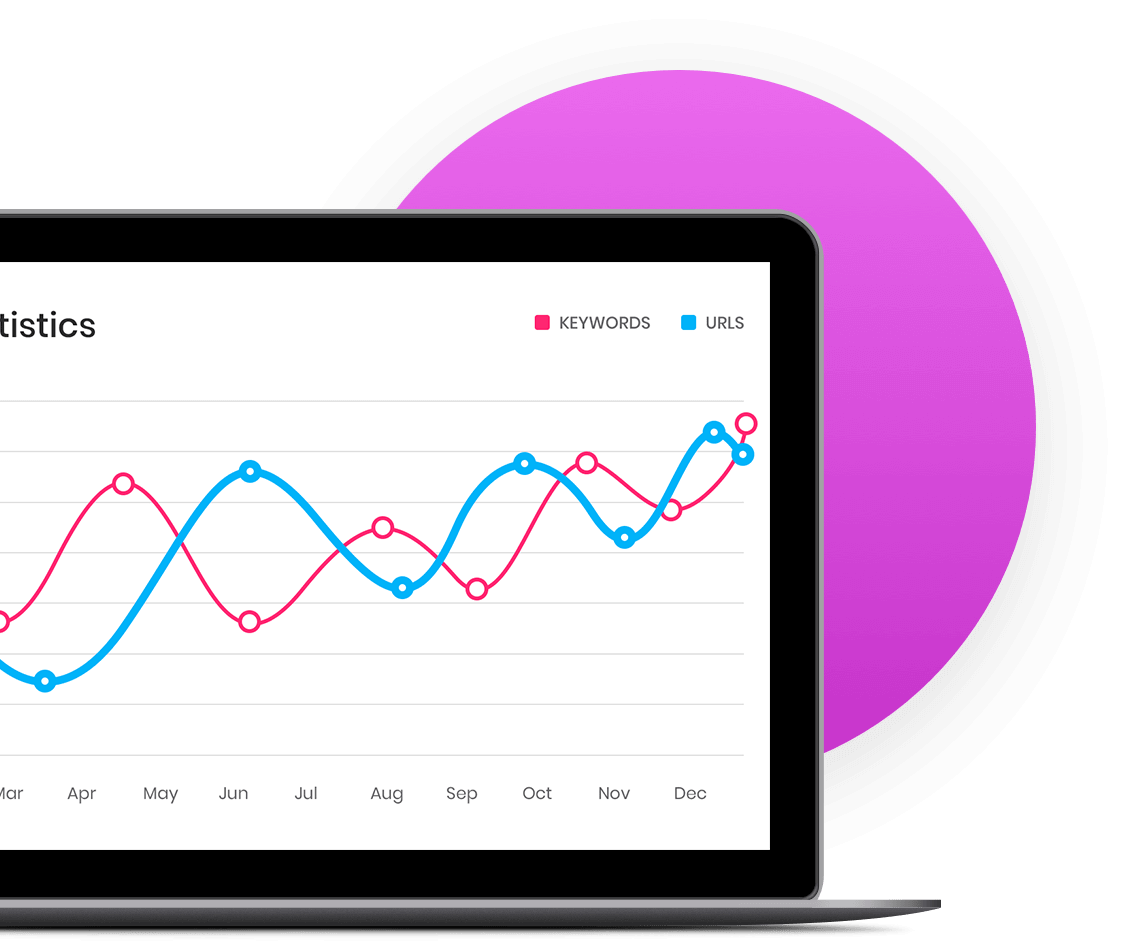Mobile-first indexing represents a fundamental shift in how Google crawls and ranks websites. Rather than prioritising desktop versions, Google now uses the mobile version of your site as the primary basis for determining search rankings. This change reflects the dominance of mobile devices in today’s digital landscape, where over 60% of searches occur on smartphones and tablets.
Understanding mobile-first indexing is crucial for businesses aiming to maintain or improve their search visibility. A mobile-optimised website isn’t just a nice-to-have – it’s essential for SEO success.
This guide explores:
- The driving forces behind Google’s mobile-first approach
- Critical impacts on your SEO strategy
- Essential responsive design principles
- Speed optimisation techniques
- Content adaptation strategies
- Practical tools for mobile SEO assessment
Whether you’re a business owner or marketing professional, you’ll gain actionable insights to enhance your mobile SEO performance and align with Google’s mobile-first standards.
In addition to these strategies, leveraging CRM consulting services can further enhance your business’s ability to adapt and thrive in this new digital landscape. These services streamline CRM processes, boost customer satisfaction and ultimately increase sales, which are all vital components of a successful online presence.
The Shift Towards Mobile-First Indexing by Google
Google’s mobile-first indexing represents a fundamental shift in how search engines crawl and rank websites. Under this approach, Google predominantly uses the mobile version of a website’s content for indexing and ranking – a stark departure from the traditional desktop-first methodology.
This strategic pivot reflects the changing landscape of internet usage. Recent data from Statista reveals that mobile devices account for 59.4% of global website traffic, with UK users spending an average of 3.5 hours daily on their smartphones for internet access.
Key Components of Mobile-First Indexing
The key components of mobile-first indexing include:
- Primary Crawling Focus: Googlebot primarily crawls and indexes the mobile version of web pages
- Ranking Signals: Mobile content determines how Google ranks pages, even for desktop searches
- User Experience Priority: Mobile-friendly features directly impact search visibility
How Mobile-First Indexing Affects Websites
Mobile-first indexing affects websites in several ways:
- Content Parity: Mobile and desktop versions must maintain identical primary content
- Metadata Consistency: Title tags and meta descriptions need uniformity across versions
- Structured Data: All markup should be present on both mobile and desktop versions
Reasons Behind Google’s Shift to Mobile-First Indexing
The driving forces behind this shift stem from evolving user behaviour:
- 82% of UK smartphone users research products on their mobile devices before purchasing
- Voice searches have increased by 270% since 2018, predominantly from mobile devices
- Mobile commerce sales are projected to reach £105.28 billion in the UK by 2024
Google’s commitment to mobile-first indexing reflects a broader transformation in digital consumption patterns. Websites failing to adapt risk decreased visibility in search results, regardless of their desktop performance. This algorithmic preference for mobile-optimised content has created a new standard for digital presence, where mobile compatibility isn’t just an option – it’s a requirement for search success.
Key Impacts of Mobile-First Indexing on Your SEO Strategy
Mobile-first indexing creates significant shifts in how websites need to approach their SEO strategies. These changes affect everything from technical implementation to content presentation, requiring a comprehensive adaptation of existing SEO practices.
1. Responsive Design and Fluid Layouts: The Cornerstones of Mobile SEO
Responsive design stands as a critical element in mobile-first indexing success. Google’s algorithms specifically look for websites that adapt seamlessly across different screen sizes and devices. This adaptability directly influences search rankings and user experience metrics.
Key Components of Responsive Design:
- Fluid Grids: These automatically adjust content layout based on screen dimensions
- Flexible Images: Images that scale proportionally within their containing elements
- CSS Media Queries: Code that modifies layout based on device characteristics
Testing Across Multiple Devices
A thorough testing strategy across various devices ensures your website maintains functionality and appearance regardless of how users access it. This approach should include:
- Desktop computers
- Tablets (both portrait and landscape orientations)
- Smartphones of different screen sizes
- Various browsers and operating systems
Essential Mobile Design Elements:
- Touch-friendly navigation with adequate spacing between clickable elements
- Properly sized fonts that remain readable without zooming
- Clear calls-to-action visible without scrolling
- Fast-loading pages optimised for mobile data connections
Impact on Search Rankings
Google’s mobile-first approach means your mobile site version determines your search rankings. Sites with poor mobile experiences face:
- Reduced visibility in search results
- Higher bounce rates from mobile users
- Lower conversion rates
- Decreased user engagement metrics
This is where partnering with an experienced SEO Agency can make a significant difference. They can help you navigate the complexities of mobile-first optimization, ensuring your website adapts effectively to these changes.
Technical Implementation Requirements
Successful mobile-first optimisation requires attention to specific technical elements:
- Viewport Meta Tag: Ensures proper scaling on mobile devices
- Mobile-Friendly URLs: Identical URL structure across mobile and desktop versions
- Schema Markup: Consistent implementation across both versions
- XML Sitemaps: Updated to reflect mobile-optimised content
These technical aspects work together to create a foundation for strong mobile SEO performance. Each element plays a crucial role in how Google crawls, indexes and ranks your site in search results.
In addition to these general strategies, it’s also essential to consider the specifics of local SEO. As more users conduct searches on their mobile devices, optimizing for local search results becomes increasingly important.
2. Site Speed Optimisation Techniques for Mobile Devices
Site speed directly impacts user experience and search rankings on mobile devices. Google’s research indicates 53% of mobile users abandon sites that take longer than three seconds to load. This behaviour sends negative signals to search algorithms, potentially affecting your site’s visibility.
Essential Speed Optimisation Techniques:
- Image Compression and Formatting
- Implement WebP format for images
- Use responsive images with srcset attributes
- Compress existing images without quality loss
- Lazy load images below the fold
- Code Optimisation
- Minify CSS, JavaScript and HTML
- Remove unused code and reduce redirects
- Implement browser caching
- Utilise AMP (Accelerated Mobile Pages) where appropriate
- Server-Side Improvements
- Choose reliable hosting with fast server response times
- Enable GZIP compression
- Use content delivery networks (CDNs)
- Optimise database queries
Regular speed testing through tools like Google’s PageSpeed Insights helps identify specific areas needing improvement. Our data shows that implementing these optimisation techniques can reduce load times by up to 60%, leading to improved user engagement and better search visibility.
A practical approach involves creating a speed optimization checklist tailored to your site’s specific needs. This allows for systematic improvements while monitoring the impact on both user experience and search rankings. Regular testing across different mobile devices and connection speeds ensures consistent performance for all users.
3. Crafting Mobile-Friendly Content That Engages Users
Mobile users interact with content differently than desktop users. Their attention spans are shorter and they often browse whilst multitasking or on-the-go. Creating content that resonates with mobile users requires specific structural considerations.
Essential Elements of Mobile-Friendly Content:
- Short, focused paragraphs (2-3 lines maximum)
- Descriptive subheadings that guide users through the content
- Strategic use of white space to improve readability
- Bullet points and numbered lists for quick information scanning
- Larger font sizes (minimum 16px) for comfortable reading
Navigation Optimisation for Mobile Users:
- Clear, thumb-friendly menu buttons
- Simplified navigation structure
- Prominent search functionality
- Easy-to-spot call-to-action buttons
- Minimal scrolling required to access key information
The placement of interactive elements plays a crucial role in mobile engagement. Touch targets should be at least 44×44 pixels, with adequate spacing between clickable elements to prevent accidental taps.
Content prioritisation becomes essential on mobile devices. Place the most important information at the top of the page, following a clear hierarchy that guides users through your message. This approach, known as the inverted pyramid style, ensures users capture key points even during brief viewing sessions.
Images require careful consideration in mobile content. Each visual element should serve a purpose and include descriptive alt text. Position images to break up text naturally without disrupting the reading flow and ensure they scale appropriately across different screen sizes.
4. Adapting Your Content Strategy to Evolving Search Behaviour on Mobile Devices
Mobile users interact with search engines differently than desktop users. The rise of voice search and personal digital assistants has transformed how people seek information, creating new opportunities for SEO optimisation.
Key Changes in Mobile Search Behaviour:
- Voice-activated searches tend to be longer and more conversational
- Questions often begin with ‘how’, ‘what’, ‘where’ and ‘when’
- Local intent features prominently in mobile searches
- Users expect immediate, direct answers
To align your content strategy with these behavioural shifts, consider incorporating natural language patterns into your keyword research. Rather than focusing solely on traditional keyword phrases, build content around complete questions and conversational queries.
Practical Implementation Steps:
- Create FAQ sections using actual user questions from search data
- Structure content to directly address specific user queries
- Include location-specific information where relevant
- Optimise for featured snippets by providing clear, concise answers
The rise of semantic search means Google now better understands context and user intent. Your content should reflect this by:
- Using natural language and varied vocabulary
- Including related terms and concepts
- Providing comprehensive answers to topic-related questions
- Maintaining consistent, authoritative expertise in your subject area
Voice search optimisation requires a shift from traditional keyword-focused content to topic-based content clusters. This approach helps search engines understand the relationships between different pieces of content and better serve user queries.
Remember to analyse your mobile search analytics regularly to identify emerging patterns in how users discover and interact with your content. This data-driven approach ensures your content strategy remains aligned with evolving user behaviour.
Tools to Diagnose and Improve Your Mobile SEO Performance
Effective mobile SEO requires regular monitoring and optimisation using reliable diagnostic tools. Here are the essential tools to assess and enhance your mobile site performance:
1. Google PageSpeed Insights
- Analyses both mobile and desktop versions of your site
- Provides detailed performance metrics and loading times
- Offers specific recommendations for improvements
- Highlights issues affecting Core Web Vitals
- Generates real-world performance data from Chrome users
2. Mobile-Friendly Test Tool
- Evaluates mobile compatibility of individual pages
- Identifies mobile usability issues
- Screenshots showing how Googlebot sees your page
- Flags problematic resources and elements
3. Additional Essential Tools
- Chrome DevTools Mobile Simulator – Test site behaviour across devices
- Search Console Mobile Usability Report – Track mobile-specific indexing issues
- GTmetrix Mobile Analysis – Detailed performance metrics and recommendations
- WebPageTest – Advanced loading sequence analysis for mobile devices
These tools provide actionable insights for optimising:
- Image sizes and formats
- Browser caching implementation
- Server response times
- JavaScript and CSS delivery
- Content layout and structure
Regular testing with these tools helps identify potential mobile performance issues before they impact your rankings. Implementing the suggested improvements ensures your site maintains optimal mobile performance and meets Google’s requirements for mobile-first indexing.
A comprehensive mobile SEO audit should incorporate data from multiple tools to create a complete picture of your site’s mobile performance and identify priority areas for improvement.
Integrating Mobile-First Indexing into a Holistic SEO Strategy (Alloy Marketing Approach)
At Alloy Marketing, our data-driven marketing strategies reflect a deep understanding of mobile-first indexing’s role in modern SEO. Our approach integrates mobile optimisation seamlessly into comprehensive digital marketing campaigns, ensuring each element works harmoniously to boost search visibility.
Key Components of Our Mobile-First Strategy:
- Cross-Channel Alignment
- Synchronising mobile SEO with social media presence
- Coordinating paid search campaigns with organic mobile visibility
- Integrating email marketing for consistent mobile user experience
- Brand-Centric Mobile Optimisation
- Maintaining brand voice across mobile content
- Adapting visual elements for smaller screens whilst preserving brand identity
- Creating mobile-specific content that aligns with brand messaging
Our client-focused SEO adaptation process involves continuous collaboration with businesses to refine their mobile presence. Through regular performance monitoring and strategy adjustments, we ensure mobile optimisation efforts align with broader marketing objectives.
Technical Integration Points:
- Mobile site architecture aligned with content marketing goals
- Speed optimisation balanced with rich media requirements
- User experience improvements based on mobile behaviour analysis
- Local SEO enhancement for mobile search patterns
We implement these strategies through a transparent partnership model, sharing detailed analytics and performance metrics with clients. This approach allows for agile adjustments to mobile SEO tactics while maintaining focus on long-term business growth objectives.
Conclusion
Mobile-first indexing represents a fundamental shift in how search engines evaluate and rank websites. Creating a seamless mobile experience isn’t optional – it’s essential for maintaining visibility in search results and meeting user expectations.
The path to a future-proof SEO strategy demands continuous adaptation and refinement. Businesses must:
- Monitor mobile performance metrics religiously
- Test site functionality across diverse devices
- Optimise content for mobile consumption
- Maintain fast loading speeds
A robust mobile-first approach extends beyond technical optimisation. It requires understanding evolving user behaviours and search patterns to deliver meaningful experiences that drive engagement and conversions.
The impact of mobile-first indexing on your SEO strategy will only grow stronger. Businesses that prioritise mobile optimisation now position themselves for sustained search visibility and competitive advantage in an increasingly mobile-centric digital landscape.
Ready to transform your mobile SEO performance? Contact our team to develop a tailored strategy that aligns with Google’s mobile-first expectations.
FAQs
What is mobile-first indexing and why is it important for SEO?
Mobile-first indexing means Google primarily uses the mobile version of your website for indexing and ranking. It’s crucial for SEO because most users now access the internet via mobile devices, so optimizing your mobile site directly impacts your search rankings.
How does responsive design influence my website’s performance under mobile-first indexing?
Responsive design, including fluid layouts and media queries, ensures your website adapts seamlessly across all devices. Google prefers responsive sites as they provide a consistent user experience on mobile, which positively affects SEO performance and search rankings.
Why is site speed optimization essential for mobile SEO?
Site speed is a critical ranking factor in mobile-first indexing. Fast loading times improve user experience and reduce bounce rates. Techniques like image compression, caching strategies and minimizing code help optimize load times, boosting your site’s visibility in search results.
How should I tailor my content strategy for better engagement on mobile devices?
Create mobile-friendly content with short paragraphs and clear structure for easy readability on small screens. Design intuitive navigation tailored to mobile users to enhance engagement and meet Google’s expectations for quality mobile experiences.
What changes in search behavior on mobile devices should influence my SEO content planning?
Mobile users increasingly use personal and conversational queries. Adapting your content to address these natural language searches helps align with evolving search behaviors, improving relevance and ranking under mobile-first indexing.
Which tools can I use to assess and improve my website’s mobile SEO performance?
Google PageSpeed Insights and the Mobile-Friendly Test tool are essential for diagnosing site speed issues and compliance with Google’s mobile usability standards. Using these tools helps identify areas for optimization to enhance your site’s mobile SEO effectiveness.






